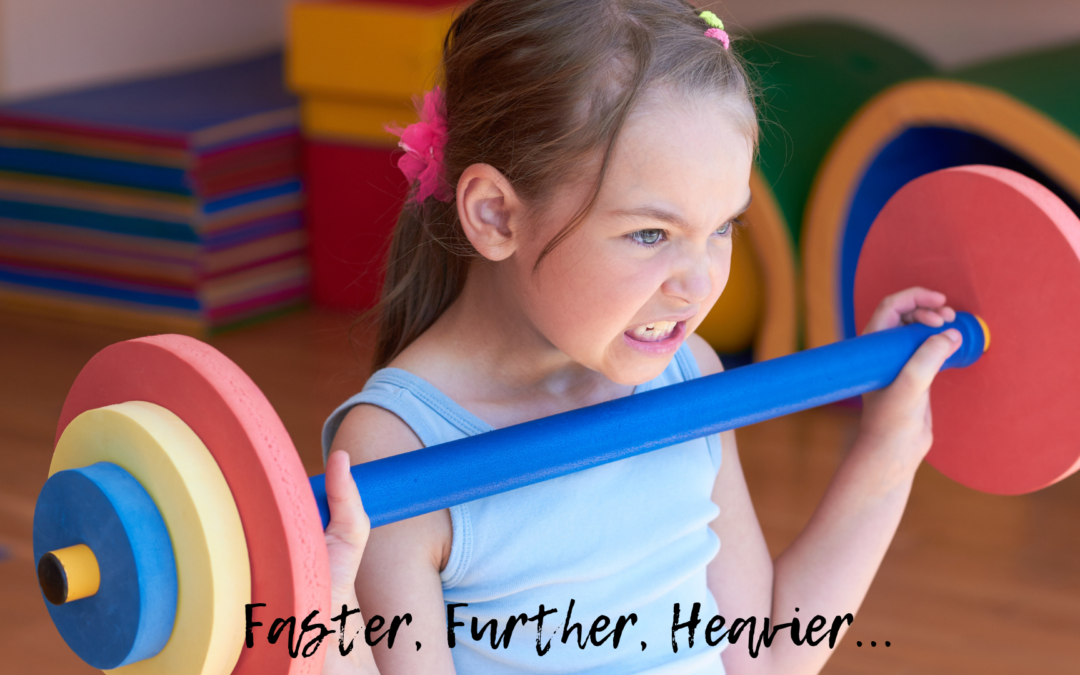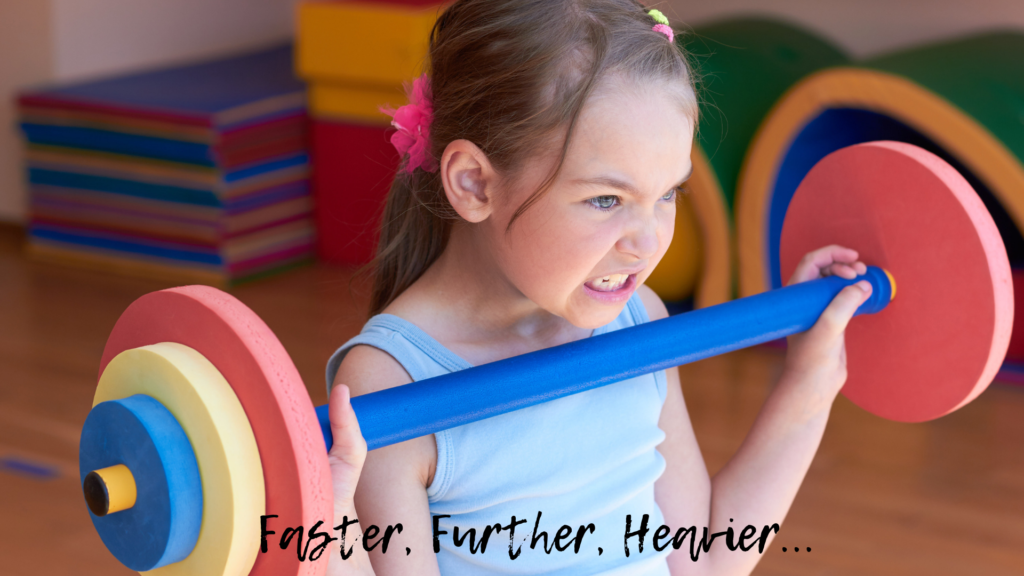Faster, Further, Heavier….
When an activity becomes easy or routine for a young athlete, coaches immediately default to one of the above interventions to make the activity more challenging. After all, each makes the activity harder. The body and brain respond to hard activities by adapting, repairing, and ultimately, thriving.
Faster, further, and heavier, can be subject to a host of limitations for young athletes, however. Additionally, training can become very one dimensional and boring.
Not a good scenario for undeveloped neuromuscular systems and short attention spans.
I would often face these challenges when training groups of young children away from a facility or when busy training hours limited space and safe access to equipment. As opposed to merely “getting creative,” I wanted to establish a more effective framework for properly progressing my athletes.
Using resources like Josef Drabik’s book “Children in Sports Training” and tons of trial and error, I developed a toolbox of strategies to keep kids progressing along the developmental curve.
Regardless of the space, equipment, or facilities you have access to, below are ways to make activities more challenging
1. Creative Discovery: Children’s imaginations can become great training tools. The ground beneath their feet, the air around them, and their own body can be transformed merely by a coaches’ suggestion.
For example “Run like you’re on very thin ice”, “Shuffle like you’re moving through Jell-O”, or “Crawl like a lion” challenge the athlete to immediately modify various components of movement. Young athletes enjoy doing it too!
–
–
2. Change in Direction of Movement (Plane of Motion): Something as simple as performing an activity backwards, laterally, or in a novel pattern adds load to the neuromuscular system.
“Skip to the cone” can easily become “Skip backwards in a zig zag to the cone”. The latter provides a new movement problem to solve.
–
–
–
3. Change Starting or Finishing Position: Starting or ending an activity from the ground or from a different body orientation provides a new context for any movement.
For example, “Run to the cone” from a standing position can become “Run to the cone” starting or ending on the child’s knees, back, or other orientation.
–
4. Change the Range of the Movement: While “further” changes the range of a movement, consider “closer”, “higher”, and “lower” as well.
For example: The 5-10-5 becomes the 2.5-5-2.5. High hurdle jumps turn into low, quick hurdles jumps. Basic lunges turn into front foot elevated lunges. Two steps forward or back can dramatically change med ball wall work.
–
5. Create Time Limits: Extending or limiting time for an activity can increase how challenging that activity becomes. While most coaches default to time criteria in order to improve speed or endurance, body control can be enhanced by controlling time variables as well.
For example: When “Do 10 push- ups” becomes “Do exactly 10 push- ups in exactly 30 seconds” it increases the young athletes awareness for movement speed and cadence.
6. Add Extra Movements: When repeating a single movement becomes routine, having to coordinate an additional movement increases the challenge.
For example: A “Wall Squat” becomes a “Wall Squat and Shuffle. ” A “Push Up” becomes a “Push Up and Roll”.
–
7. Change the Environment: Consider the different environmental challenges that may be available in the training setting. Hills, sand, and other unique elements of the training environment can be used to challenge movement.
8. Sensory Interference: Modifying sight, sound, or other sensory feedback requires a young athlete to discover and learn to use new sensory strategies while moving.
For example: Navigate a cone agility drill with one eye closed. Instruct athletes to move right when you call for them to move left. Add an unstable surface to a balance activity.
–
9. Signal changes: Young athletes become conditioned to coaches’ predictable signals like “stop” and “go”. Creating novel indicator signals that require a higher level of mental processing increase the challenge of an activity.
For example: Instead of “Go!” consider “Go when I say the capital of California” then call out 2 or 3 different options.
–
10. Change the Order of Exercise: Kids can become conditioned to the typical rhythm and framework of a training session. While coaches develop these frameworks to optimize athlete output, periodically changing can create a new challenge.
For example, perform conditioning activities immediately after warm up. Perform strength activities before speed, or vice versa. Again, most training framework dogmas are created for good reasons. However, occasionally change not only can make training more challenging, it breaks monotony!
As you can see, there are many simple ways to increase the difficulty and “load” of an activity. This makes it fast and easy to safely progress and challenge young athletes without having to rely on tons of specialized equipment or endless creativity.
Try these and other ways to help create active, athletic young athletes for life.
For 20 of SPIDERfit Kids’ favorite activities for developing athleticism… CLICK HERE to download the Powerful Playground Preview Guide for Free!
Brett Klika CEO and co-founder of SPIDERfit is an international award- winning certified strength and conditioning coach, author, and motivational speaker with over 20 years experience motivating and inspiring youngsters to a life of health, fitness, and performance.
Brett consults with schools, athletic organizations, fitness professionals, and fortune 500 companies around the world.






Connect with SPIDERfit!